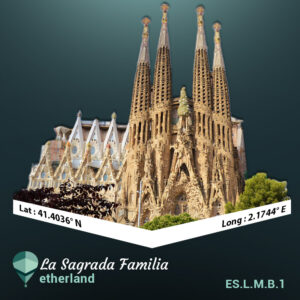 Though the Sagrada Família's construction began around 1882, it stopped during the Spanish Civil War and was slowly resumed since 1950. Its construction should be completed by 2026 and its highest spires are expected to rise up to 170 meters. Despite being technically unfinished, it stands with glory in the heart of Barcelona displaying magnificent gothic styled architecture, breathtaking columns made from granite and basalt rocks and an altar decorated with angel heads.
Though the Sagrada Família's construction began around 1882, it stopped during the Spanish Civil War and was slowly resumed since 1950. Its construction should be completed by 2026 and its highest spires are expected to rise up to 170 meters. Despite being technically unfinished, it stands with glory in the heart of Barcelona displaying magnificent gothic styled architecture, breathtaking columns made from granite and basalt rocks and an altar decorated with angel heads.
Few buildings in the world have captured the imagination from an architectural standpoint in the modern era quite like the Basilica de la Sagrada Familia, the Basilica of the Holy Family, in Barcelona. The Sagrada Familia was the brainchild of a Catalan bookseller, Josep Maria Bocabella, who visited Italy in the early 1870s. While there he had a chance to view the Basilica della Santa Casa, a Marian shrine in the town of Loreto in central Italy. Inspired by it and his broader religious experiences while at the Vatican in Rome, he returned to Spain and there began work on building a new church in the city of Barcelona.
Initially Bocabella worked with Francisco de Paula del Villar, an architect who planned the church to have a Gothic, medieval exterior and design. With minimal funding work commenced in the 1870s and the apse was complete by the time del Villar resigned in 1883. The work was now entrusted to a young architect who wanted to change the design to reflect his use of Catalan Modernist architectural forms. His name was Antoni Gaudi and it is his design which has shaped the Sagrada Familia. Gaudi’s design ideas involved a highly personalised and stylised interpretation of Gothic architecture and Art Nouveau with an almost microscopic attention to detail. As a result the Sagrada incorporates many highly unusual features, including a planned series of eighteen spires pitched at atypical angles and used to represent the Twelve Apostles, the Virgin Mary, Jesus Christ and the Four Evangelists. For instance, the spires symbolising the Four Evangelists, which are still to be built, are intended to have sculptures at their peak of a winged bull, a winged man, an eagle and a winged lion, the symbols of Saint Luke, Saint Matthew, Saint John and Saint Mark respectively.
Gaudi died in 1926 leaving his work largely incomplete and many events in the intermittent period have slowed progress, notably the Spanish Civil War of the 1930s, during which the building was actually damaged, and decades of tepid interest from General Franco’s regime between the 1940s and the 1970s. However, construction work renewed again in the aftermath of Franco’s dictatorship and the advent of new technologies has speeded the process, such that it had been hoped to complete it by 2026, a date which now seems unlikely following further delays caused by the Covid-19 pandemic. In the meantime the building, though listed as a UNESCO World Heritage Site, continues to divide opinion. Many have praised Gaudi’s design as a work of architectural genius, but the author of 1984 and Animal Farm, George Orwell, memorably referred to it as, “One of the most hideous buildings in the world.” Perhaps dividing opinion is the point of the building!